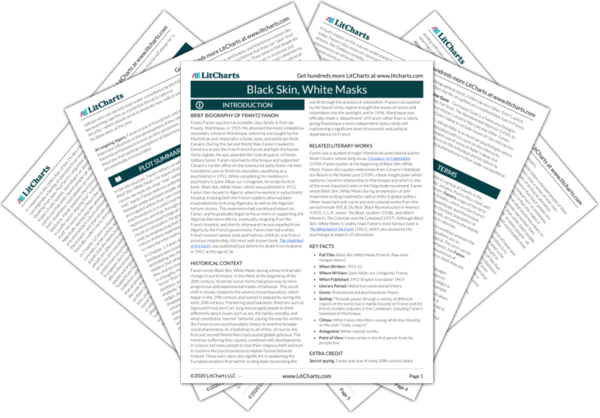LitCharts assigns a color and icon to each theme in Black Skin, White Masks, which you can use to track the themes throughout the work.
Colonialism, Diaspora, and Alienation
Material vs. Psychological Oppression
Self-Image and Self-Hatred
Desire, Aspiration, and Competition
